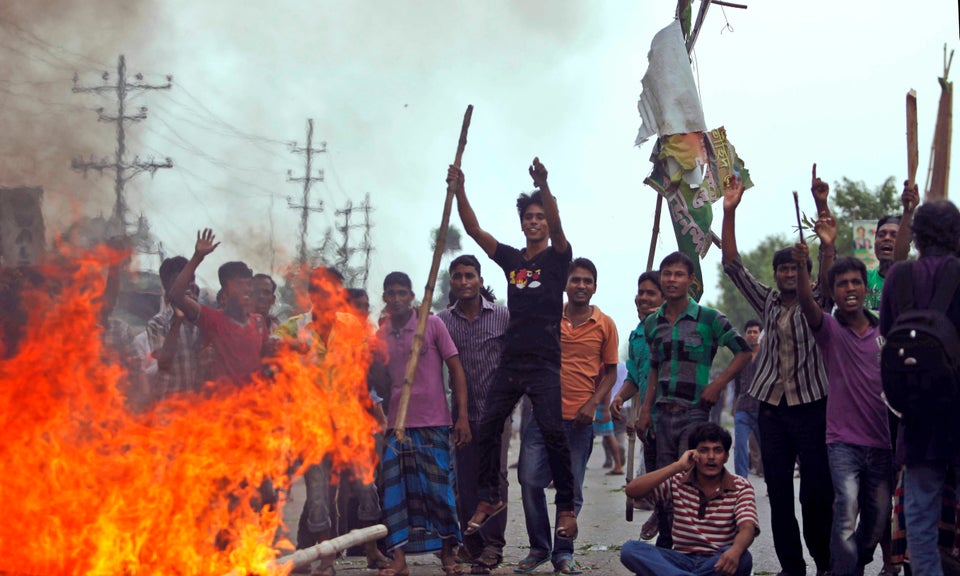Buying a T-shirt for a couple of bucks is certainly a steal, especially when consumers consider the amount of money the laborers behind it were deprived.
To demonstrate how cheap clothing often translates into cheap labor, advocacy group Fashion Revolution set up a vending machine in a busy European square that sold tops for 2 euros (about $2). But when passersby learned that the factory workers who made the shirts were paid paltry wages -- even though they toiled long hours -- most shoppers declined the purchase.
One of those workers included Manisha who puts in 16 hours a day and makes as little as 13 cents an hour.
The social experiment coincided with last month’s second annual Fashion Revolution Day, an awareness event that pays tribute to the infamous Bangladesh factory collapse, which claimed more than 1,100 lives in 2013.
That tragedy at the Rana Plaza factory exposed the dangerous conditions workers face, and pressured U.S. and European retailers to commit to investing in safer work environments and paying fair wages.
That year, some major U.S. and European retailers, including H&M, signed an international five-year accord that demanded independent safety inspections of factories in Bangladesh. H&M has committed to developing pay structures that would enable a fair living wage in 750 factories it works with, including those in Cambodia and Bangladesh, by 2018.
Fashion Revolution, a conglomerate of designers, academics, writers and business leaders, is calling on retailers to become even more transparent, so shoppers can know exactly where their garments are sourced and how the people who produced them fared in the process. It’s also urging consumers to demand that companies answer the simple question: Who made my clothes?
“Every day, you affect someone’s life because you get dressed. And what you buy to wear can actually make a difference,” Andrea Paltzer wrote in a blog post for Fashion Revolution. “It can have a huge social impact. Fashion can be an answer to poverty. It should not be the cause of poverty and environmental destruction.”
Learn more about Fashion Revolution and how you can get involved here.



